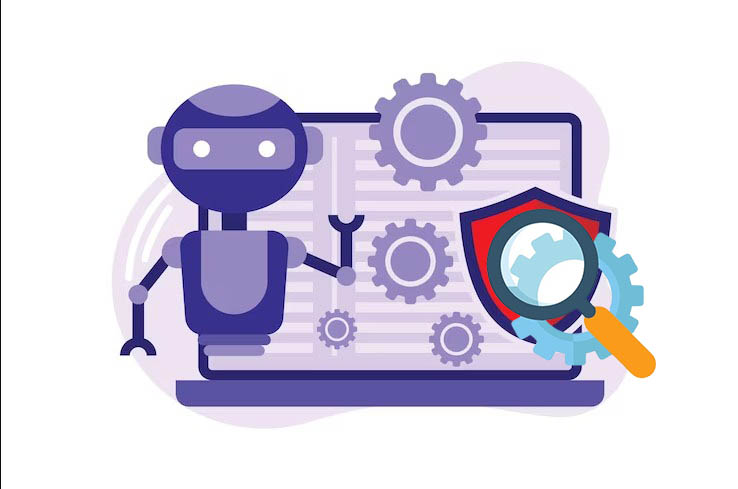What is Configuration Software Testing?
Configuration Testing is a software testing technique where the application under exam is evaluated using various software and hardware combinations, including variations. The objective is to devise optimal settings on which a software application works correctly and without any errors or mistakes. It ensures that by whatever rationale the software is run, it still operates finely.
Configuration Testing: Example Test Cases
Let’s illustrate this with an example involving configuration testing a Desktop Application. Software testing company consider a 3-tier Desktop application developed using Asp.Net, consisting of the following components:
Client:
UXs which are designed to run on Windows-based systems are the user interfaces concerned. We thereby provide a range of resources that meet the IT needs of our consumers who might include Windows XP, Windows 7, Windows 8, etc. )
Business Logic Server:
The middle server, which is called with application layer, deals with business logic. In this aspect, WDCAS (Windows Data Center Application Server), runs on top of Windows Server 2008 R2, Windows Server 2012 R2, and other versions of Windows Server, etc.
Database Server:
They especially emphasized the role of data in software. (ex: SQL Sever 2008 R2, SQL Servers 2012, etc.)
Software Testing Company India must test the code crossing different client-server-database platforms to obtain the required functionality. Here are some sample test cases for configuration testing:
1. Client-Server Compatibility
In this configuration testing case, we discuss interfacing of the client application with the business logic server. Here are some additional considerations:
Operating System Versions:
Check the performance of the client program on different OS deals (e.g. Windows XP,7,10). Provide (Riscy, Windows 10, Windows 11) stability to mobile possibly completed by the server.
Browser Compatibility:
Provide support for the usage of the web browser everywhere, as people can use different web browsers. (eg. Chrome, Firefox, Edge).
Authentication Mechanisms:
Google should conduct configuration testing with various authentication methods (both 2-factor and single-factor) as it intends to select the more secure and user-friendly method. This also should be considered in spring security using OAuth 2.0 protocol support, which involves (username/password, OAuth).
2. Database Compatibility
Database compatibility testing should be put into practice to build the ground base of platform integration. Configuration testing consider the following aspects:
Database Versions:
- Extend configuration testing to underlying database engines e. g. older versions or new versions to see if you can improve your application performance. I have also added three companies from the last round (Microsoft SQL Server 2016, IBM DB2 13. 1 and Oracle 12c). Verify data retrieval from storage service, update, and perform transactions.
- Data Types and Constraints: Configuration testing with various data types (e.g., integers, strings, dates) and ensure that constraints (e.g., unique keys, foreign keys) are enforced correctly.
- Performance Under Load: Assess how the application performs when the database experiences heavy loads.
3. Regional Settings Testing
Regional settings impact user experience. Here’s what to explore:
- Time Zones and Date Formats: Change the client’s time zone and date format settings. Verify that the application displays dates and times correctly.
- Language Support: Test with different languages (e.g., English, Spanish, Japanese) to ensure proper localization.
- Currency and Number Formats: Validate currency symbols and number formatting based on regional settings.
4. Hardware Compatibility
Hardware variations can affect application performance. Consider the following:
- Memory and Processor: Configuration testing on machines with varying memory sizes and processors (e.g., 4GB RAM vs. 16GB RAM, Intel Core i5 vs. i7).
- Graphics Cards: If the application involves graphics rendering, verify compatibility with different graphics cards.
- Peripheral Devices: Test with different peripherals (e.g., printers, scanners) to ensure seamless integration.
5. Network Configuration Testing
Network conditions play a significant role in application behavior. Explore the following:
- Latency and Bandwidth: Simulate high latency and low bandwidth scenarios. Evaluate how the application handles delays.
- Firewalls and Proxies: Test scenarios where the client communicates through firewalls or proxy servers.
- Mobile Networks: If applicable, assess performance over mobile networks (3G, 4G, 5G).
6. Load Balancing Testing
Load balancing ensures optimal resource utilization. Here’s what to consider:
- Multiple Servers: Evaluate how the application behaves when load balancers distribute requests across multiple servers.
- Session Management: Verify that session data remains consistent during load balancing.
- Failover Scenarios: Test failover situations (e.g., one server going down) and ensure uninterrupted service.
Top 4 Objectives of Configuration Testing
1. Validating Configurability:
- Assessing Flexibility: Beyond just meeting basic configurability requirements, it involves evaluating the extent to which the application allows customization and adaptation to diverse user needs and preferences.
- Scalability Testing: Validate how well the application scales in terms of configurability as the complexity and scale of configurations increase, ensuring that it remains manageable and efficient.
- Automation Capabilities: Above all, take a look into the automation of configuration management tools and see such techniques as scripting or configuration as code that make the deployment and maintenance easy.
- Integration Testing: Make sure that interchangeable elements smoothly work together with the rest of the system components and external services while avoiding any problem related to compatibility or disruptions.
2. Manually Causing Failures:
- Stress Testing: A deliberate introduction of adverse conditions prebend the application: out of order or insufficient resources or incorrect settings, to evaluate its resilience during operation.
- Exploratory Testing: We shall strive to stimulate users to run exploratory tests which may reveal undetected mistakes or bugs triggered by alterations in the configuration parameter which is not included in the scripted test cases.
- Error Handling Evaluation: Measure if the app is designed correctly to handle errors as well as exceptions that occur because a configuration has been changed. Verify that it supports smooth degradation and appropriate reporting of errors.
- Recovery Mechanisms: Alleviate a certain way of recovery mechanisms operation during system recovery from a configuration-related failure that causes loss of information and data as well as decrease its persistence level.
3. Optimal Configuration:
- Performance Profiling: Utilize profiling tools for performance to have the identification of the bottlenecks be done, and the optimization of the configuration settings to be made for the improved system’s strong responsiveness, high throughput, and high resource utilization.
- Benchmarking: Execute benchmark exams to compare the output of diverse retrieval configurations and decide the most cost-effective software and machine components selection.
- Tuning Parameters: Tune configuration parameters (cache strategies, thread pool sizes, database connection pool sizes) to the highest performance capability with different query patterns.
- Load Balancing Strategies: Assessing the different algorithms and balancing approaches to distribute workload uniformly across the systems resources and to make performance similar among the various configurations.
4. Geographically Distributed Testing:
- Network Latency Simulation: By using an emulator, which simulates network conditions and time delay variation, configuration testing how large distance affects the performance of the system and the response time, particularly in distributed and cloud-based setups.
- Localization Testing: Make sure that the application is working correctly with languages and culture variations as well as currency symbols and text encoding considering elements like date formats.
- Compliance with Regional Regulations: Establish and maintain compliance with regional data protection directives, regulations, and guidelines which can be different from one place to another, hence avoiding legal issues across jurisdictions.
- Failover and Redundancy Testing: a fault-tolerant system and redundancy options need to be exchanged to maintain uninterrupted service and integrity of data when regional outages and network disruptions occur.
Conclusion:
It is just to be noted that Configuration testing is not software-oriented only; it is hardware too. eg. software systems (operating systems, middleware) that provide support for the application, and tools (printers, scanners).



